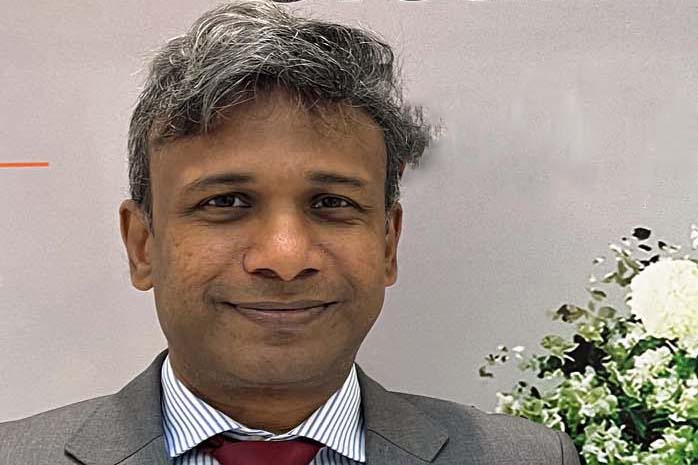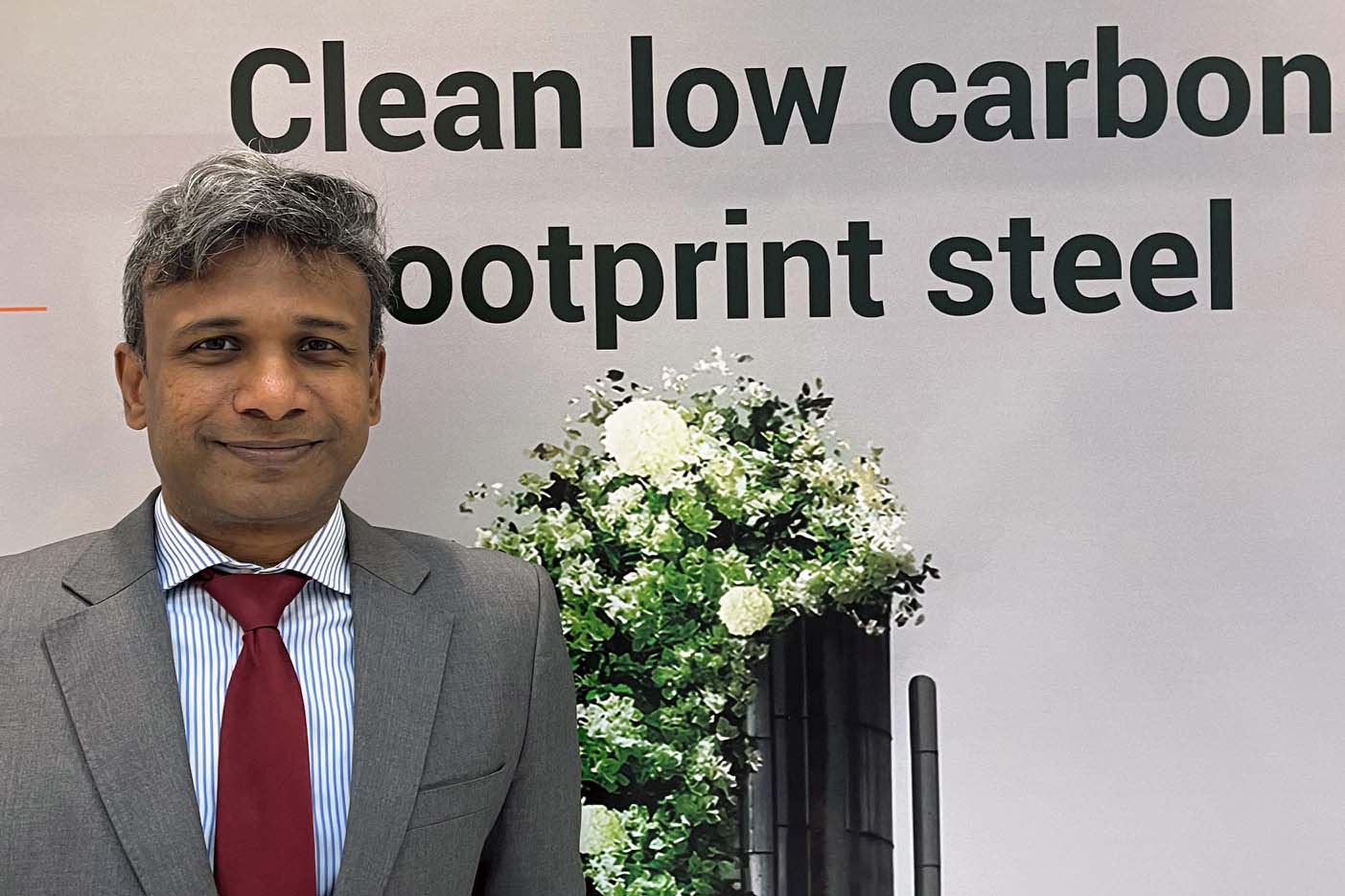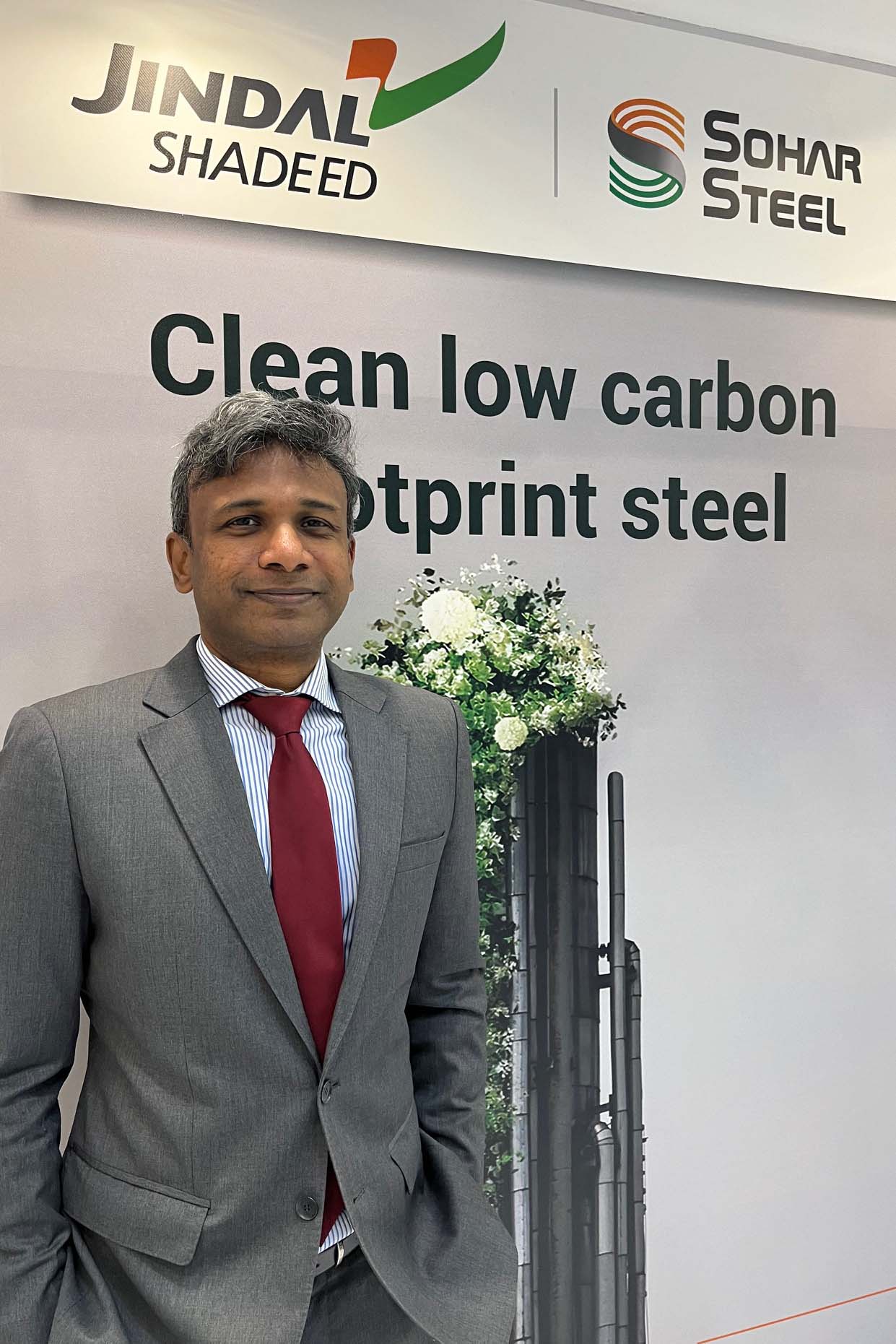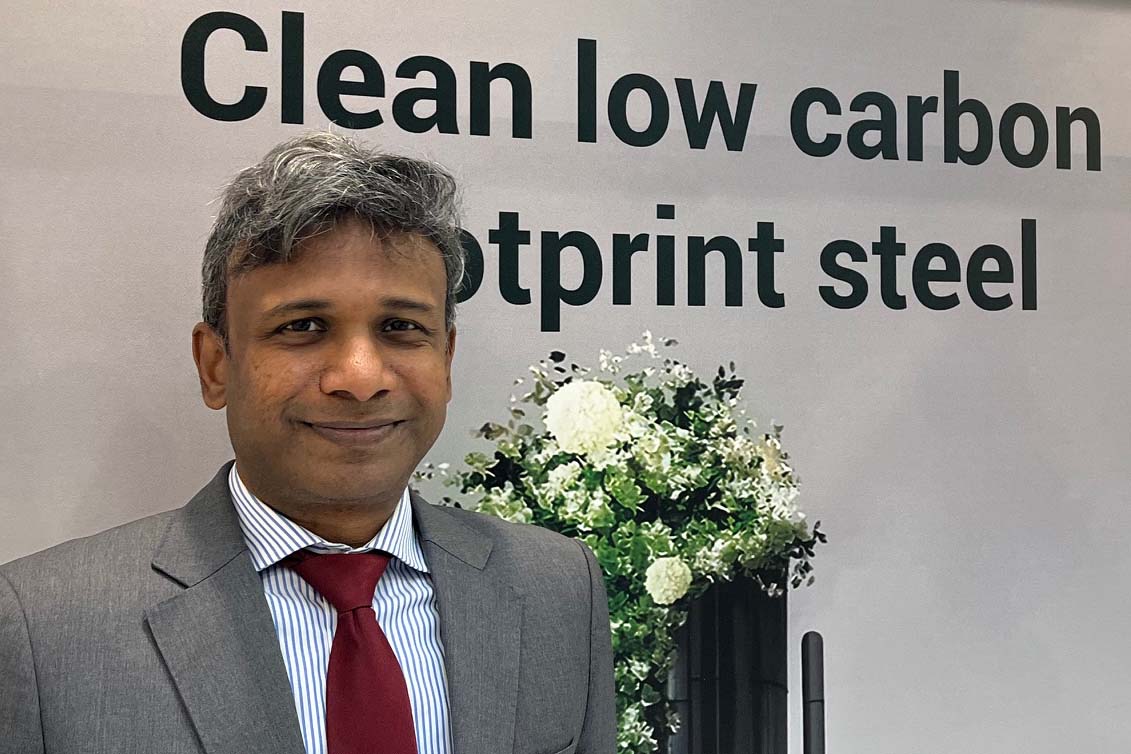Why is Oman such a great location for producing steel?
by Dagmar Dieterle


Interview mit Harssha Shetty, CEO von Jindal Shadeed Iron and Steel (JSIS)
marketSTEEL: Jindal Shadeed Steel is a primary steel producer that produces on the Arabian Peninsula. Could you please introduce your company briefly?
Jindal Steel Oman is a part of the Jindal Steel Group, which has operations across India, Oman, Africa and Australia. The group has been producing steel for over 50 years. It´s roots belong to the OP Jindal Group, which has four entities that together form the largest steel family in India and ranks among the largest in the world. The group produces more than 36 million tons of steel and the execution of planned projects will lead them to an output of 45 million tons of steel in 2026.
As part of this steel family, Jindal Steel Group has an output of 12 million tons of steel – 10 million in India and 2 million in Oman. We are expanding in India as well, to take the production to 15 million. The capacity of Jindal Steel Oman is currently at 2.4 million tons at the Jindal Shadeed site and 0.8 million tons at Sohar Steel, which we acquired last year. So, the two entities currently produce together 3.2 million tons of steel.
 marketSTEEL: Who is the owner of Jindal Steel?
marketSTEEL: Who is the owner of Jindal Steel?
The Jindal Steel Group is owned by the Jindal Family. Jindal Shadeed is a part of the Vulcan Group, which is headed by a board. Another aspect, which I would like to share, is that Vulcan Green Steel is also part of the Group, and is investing into a 5-million-ton green steel facility in Duqm in the Southeast of Oman, where we will produce steel with a carbon foot print below 0.6 tons greenhouse gases per ton of steel. At the moment, the average carbon footprint of steel globally is about 2.3 tons greenhouse gases, so we are really proud to reach 0.6 million in this new facility. All steel will be flat steel that can be used for the automotive industry, white good or wind turbines. So together with Vulcan Green Steel, Jindal Steel and Sohar Steel as well as the further expansions, which we are planning, all our activities can bring us to a production of over 10 million tons of steel in Oman by 2026/2027.
marketSTEEL: Why is Oman such a great location for producing steel?
This is a very good question. Obviously, it is rather unusual that a group from India has chosen Oman as the place for their expansions. Oman presents a unique opportunity for the steel industry that can also be seen as a role model for the entire world. I will tell you how: The whole world is currently focussed on saving the world, to tackle global warming and to reduce the increase of worldwide temperatures to a maximum of 1.5 degrees by the end of 2100. In this context, steel is the biggest challenge as around 8 percent of the global emission of greenhouse gases can be attributed to the production of steel. You may say: This is always the elephant in the room. So, if you solve the emission problem in the steel industry, you take a giant leap towards solving the problem of global warming altogether. Green steel needs gigawatts of energy for the production. This is however only possible in locations that offer great potentials for the use of renewable energy. When you are talking about renewable energy, solar energy alone would not be sufficient as a solution. When you talk about gigawatts you need a combination of solar energy as well as wind to give a high plant load factor and to make the production of energy economically sustainable.
So, Oman has 3.500 hours of sunshine per year, which makes it one of the top-5-locations in terms of sun power potential in the world. And the wind velocity can be compared to that in the Netherlands and ranks among the top 6 in the world. So, Oman is one of the few locations in the world, where you have both enormous potentials both for wind and solar power plants. But what is even more important: For these power plants you need hundreds of square kilometres of land – and precisely that is available in Oman. You have huge areas that are not inhabited and non-agricultural.
 But also, that’s not all of it yet. In order to produce green steel, you need hydrogen and for hydrogen you need water. Oman has more than 3.000 kilometres of coastline with the Arabian Sea. This provides the opportunity for an unlimited supply of water that can be desalinated and then be used to produce green hydrogen.
But also, that’s not all of it yet. In order to produce green steel, you need hydrogen and for hydrogen you need water. Oman has more than 3.000 kilometres of coastline with the Arabian Sea. This provides the opportunity for an unlimited supply of water that can be desalinated and then be used to produce green hydrogen.
So, you have all necessary ingredients in Oman: sun, wind and water. But you also need a government that intentionally wants to make use of these resources. And the Oman government is very committed in this area. Already a long time ago, Oman has set a noble target for itself. They want to have net zero economy by 2050. Many other countries have formulated similar targets, but Oman stands out in already having taken concrete actions to ensure this. They set up Hydrogen Oman LLC, or in short Hydrom. Hydrom has the target to produce 1 million tons of green hydrogen per year. Also, Oman has allocated 10 percent of its land for the use of renewable power production. More than 1.000 square kilometres of land have already been allocated to global consortiums for the construction of power plants.
Photos: marketSTEEL

